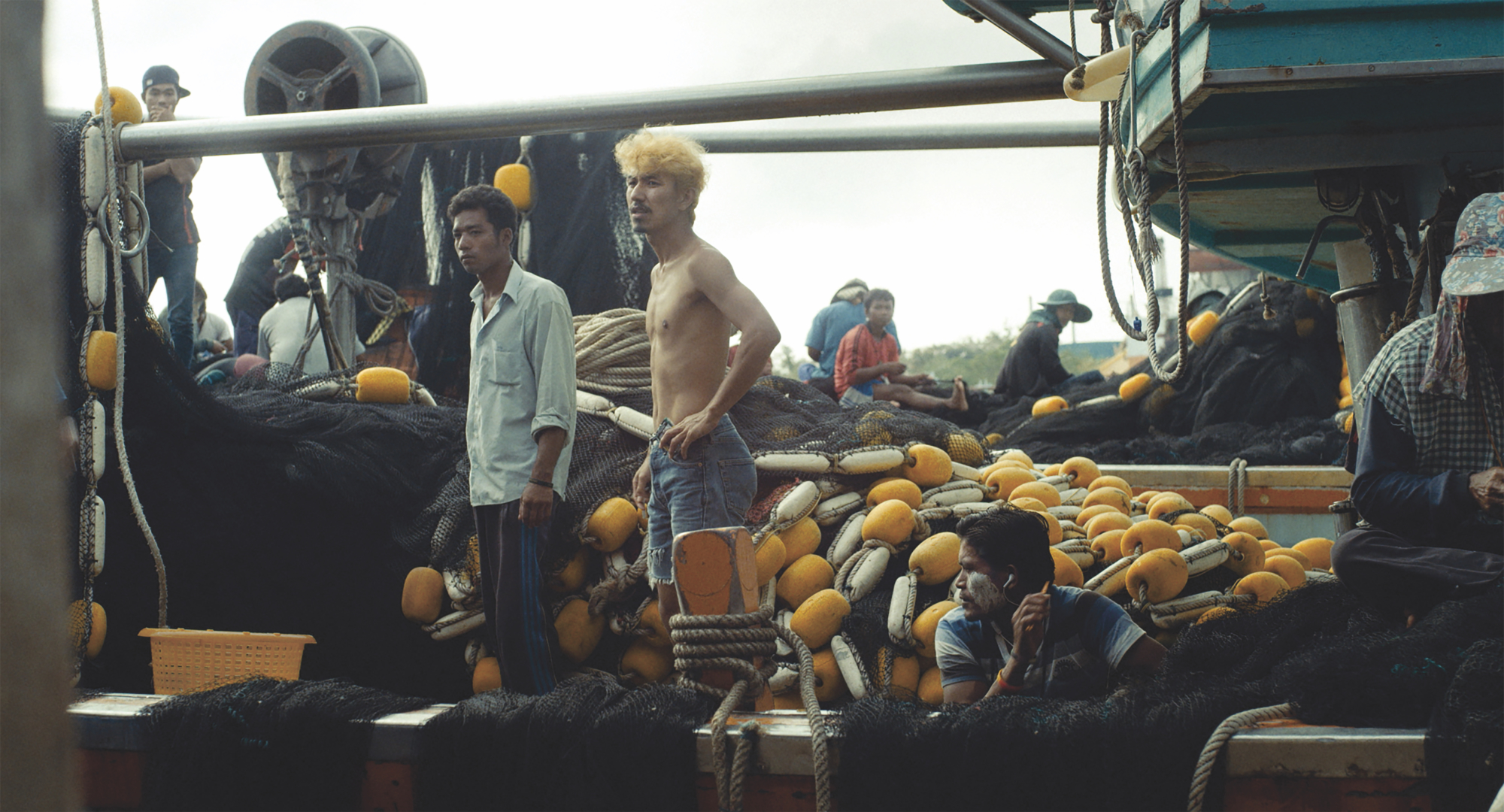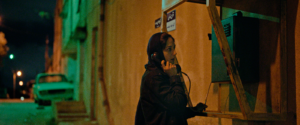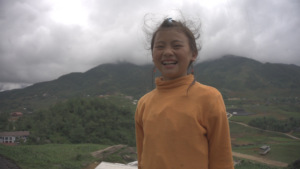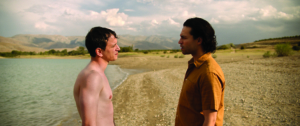Phuttiphong Aroonpheng’s feature directorial debut, Manta Ray (2018), is a mysterious and elliptical tale of life on the borderlands of his native Thailand. The film begins with a title card stating, ‘For the Rohingyas’ – referring to Myanmar’s stateless people who are nonetheless confined by the country’s national borders. After that opening contextualising statement, the film keeps its activist cards close to its chest, regarding the region’s broader humanitarian crisis with sidelong glances rather than expansive didacticism. By limiting its scope to the personal, Manta Ray individuates its political themes, allowing them to resonate beyond the film’s immediate surroundings. It is a sparse work about finding the light in dark circumstances, visualised in its signature image of flashing coloured lights, which adorn the central locations of forest, funfair and private, domestic disco. It is fitting, then, that Manta Ray’s first screening at this year’s Sydney Film Festival – held at Dendy Opera Quays – coincided with the Vivid Sydney festival, requiring intrepid cinema-goers to fight their way through the throng of families out for the light show in order to get in to see the real show.
Aroonpheng’s film begins evocatively, with the sounds of the jungle and the recurring visual of blinking fairy lights; in this scene, the lights illuminate an unknown man as he creeps through the forest, whistling some unknown signal. Under the moonlight-dappled canopy, from a distance, these lights take on a strange form of nocturnal camouflage. Up close, the visual is surreal, while the character’s machine gun heralds a danger that is confirmed when we subsequently see men digging a grave. This jungle becomes the central location of the film, accruing the significance of the Athenian forest from William Shakespeare’s A Midsummer Night’s Dream, offering the twin promise of transformation and grave peril.
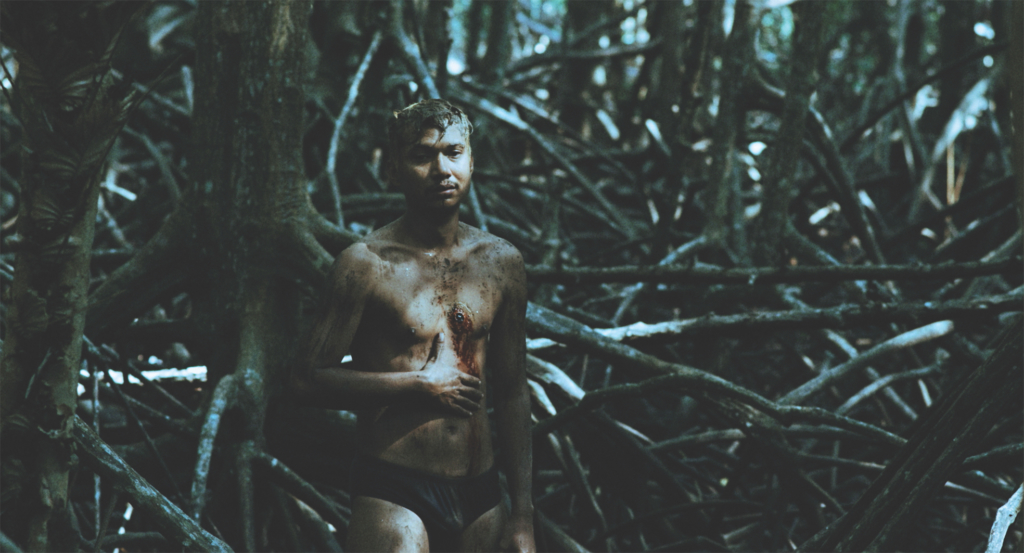
One of the shirtless gravediggers (played by Wanlop Rungkumjad) is later seen riding in the back of a tray truck and removing his red balaclava to reveal a shock of bleach-blonde hair. The early passages of the film take in the rhythms of his life as a fisherman, cruising the mangroves and wandering the outskirts of his village during his spare time. In the swamp on the periphery of the forest, he finds a man (Aphisit Hama) buried, badly wounded but alive. The fisherman takes this man back to his small shack, where he tends to his bloody wounds and slowly, gradually nurses him back to health. The first half of the film observes the deepening bond that develops between them over an unspecified period of time as the man from the swamp gradually recovers. The fisherman soon discovers that his new companion is mute; unable to determine his name, he dubs him ‘Thongchai’, in reference to the pop singer Thongchai ‘Bird’ McIntyre. In an unhurried manner, the film depicts their growing intimacy, borne out via their close proximity, as the fisherman tends to Thongchai’s wounds and bathes him. The characters’ lives continually circle a small number of locations: the shack, which defines the parameters of their interactions; the forest, with its harbingers of death but also the lure of valuable buried gems; and a neon-lit funfair, which promises nocturnal transcendence. There are hints of troubles to come: the fisherman reveals that his wife left him some time previously, hence his solitary condition and lonely disposition. There is also the unuttered question of how Thongchai came to lie left for dead in the forest, as well as what sinister phone calls dispatch him from the house late at night, weapon in hand.
This jungle becomes the central location of the film, accruing the significance of the Athenian forest from William Shakespeare’s A Midsummer Night’s Dream, offering the twin promise of transformation and grave peril.
These established rhythms are disrupted at the film’s halfway point with a reversal of fortune, shifting the dramatic stakes. The fisherman disappears from the film, and his boss tells Thongchai that he has been lost at sea after a storm, believed drowned. Thongchai assumes his role on the fishing vessel and continues his absent host’s night-time wandering of the funfair and fossicking for gemstones in the forest floor. Then, another shift: Thongchai returns to the shack one night to discover an unexpected house guest has arrived: Saijai (Rasmee Wayrana), the fisherman’s wife, now returned. Thongchai silently takes her in and, gradually, they develop a touching kindness and gradual intimacy of their own, finally rendering his transformation complete when she dyes his hair blonde. But a figure from the recent past lurks on the periphery of their new life, watching over them – perhaps a spectral presence, a vengeful agent or, possibly, a flesh-and-blood survivor of untold horrors.
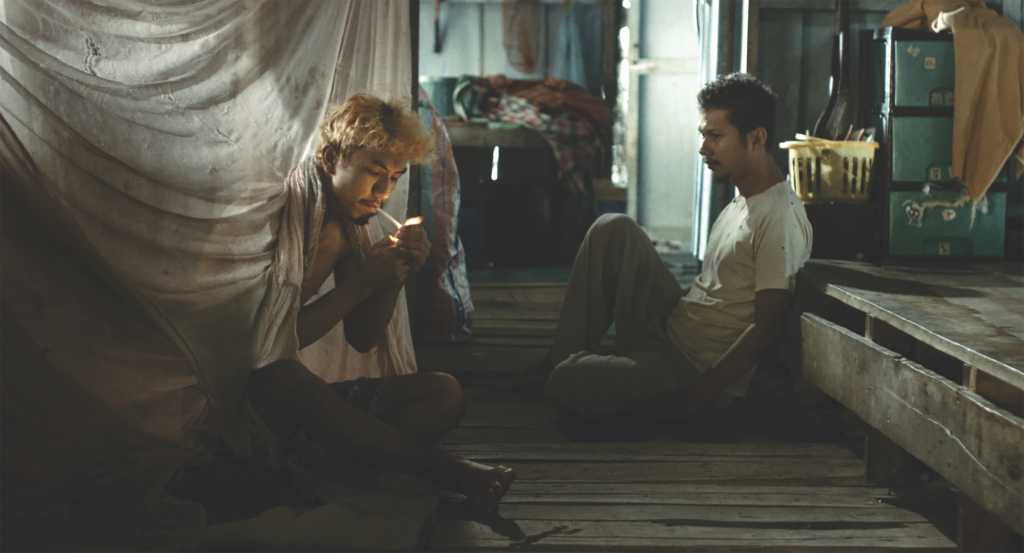
If a spectre is haunting Manta Ray – like a silhouetted phantom with glowing red eyes, stalking through a forest – it is that of Apichatpong Weerasethakul. There are many similarities between this film and the work of the famed Thai director: Manta Ray’s dualistic narrative recalls those of Tropical Malady (2004)and Syndromes and a Century (2006), while evoking the transformations that underpin those films’ diptych structures. The coyly developing homoerotic bond in Manta Ray’s first half mirrors that in Tropical Malady, while its pseudo-documentary montage sequences recall Weerasethakul’s early Mysterious Object at Noon (2000), and its surreal night-time excursions into the fairy-lit forest call to mind the more fantastical passages of Uncle Boonmee Who Can Recall His Past Lives (2010) and Cemetery of Splendour (2015). Much as Aroonpheng has gone on to do, Weerasethakul often thematically underscores his films with resonant echoes of legacies of trauma, manifesting them in obtuse and allegorical ways – seen most recently in his low-key instalment in 2018’s Thai entry to the Ten Years franchise that began in Hong Kong in 2015.[1]See Wendy Ide, ‘10 Years Thailand: Cannes Review’, Screen Daily, 11 May 2018, <https://www.screendaily.com/reviews/10-years-thailand-cannes-review/5129197.article>, accessed 1 August 2019.
Yet Manta Ray is more direct, invoking the persecuted Rohingya minority by name at its outset, and deriving its narrative and central relationship from what appears to be a refugee situation. Stylistically, the two directors’ approaches also differ: Weerasethakul is a formalist at heart, whereas Aroonpheng is looser but also more conventional in his delivery. The latter’s use of long, handheld, close following shots in shallow focus alternated with static wide-shot long takes will be familiar to any viewer who has spent time with major film-festival work over the last fifteen years or so. But, mirroring his predecessor’s narrative repetitions and themes of doubling, Aroonpheng also develops a handful of notable stylistic motifs that recur throughout the film, such as shot / reverse shots of Thongchai and the fisherman staring directly at each other – that is, the camera is steadied through their gazes, framed centrally – and humming, the only sound the mute Thongchai is capable of making.
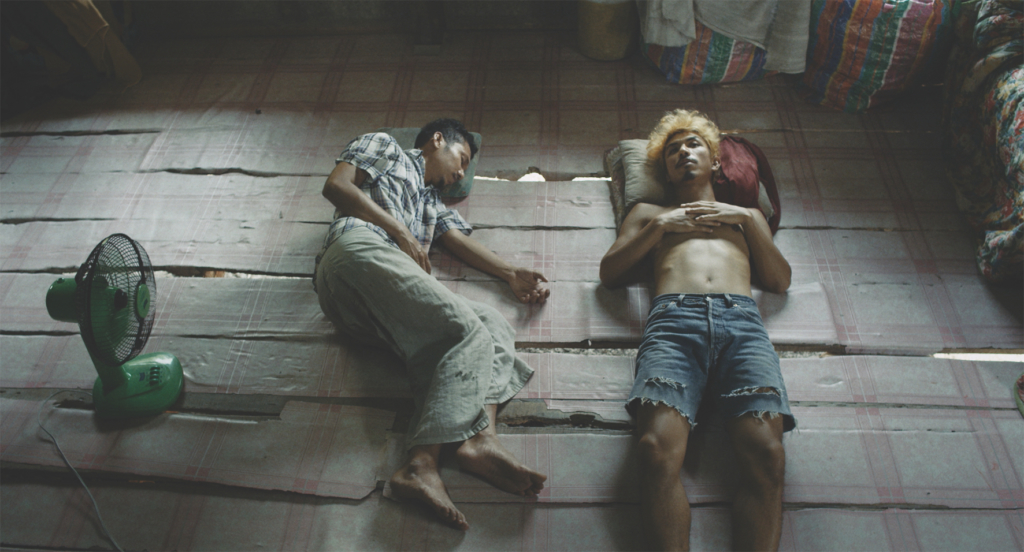
The men’s essential inability to communicate with one another underscores much of the narrative, and also renders more poignant their reciprocal humanitarian compassion. In his director’s note, Aroonpheng speaks of having witnessed such an episode in 2009 at the Moei River separating Thailand and Myanmar, which then inspired the film: ‘There was no immigration checkpoint, no patrol soldier, no barbed wires. Just a waist-deep creek […] A small boy emerged through a bush. He got in the water and began to swim towards my direction, my country.’[2]Phuttiphong Aroonpheng, ‘Director’s Note’, in Jour2Fête, Manta Ray press kit, 2018, p. 4. Aroonpheng goes on to recount watching the Burmese child playing in the water with two Thai boys, oblivious to the national markers apparently delineating their essential difference. We see this metaphor play out in the film, with water flowing throughout, as the boundaries of its two central characters’ identities become fluid. Aroonpheng places these individuated, small-scale interactions at the centre of his film. But, in his accompanying statements, and in his textual declaration of support for the Rohingya people at the film’s outset, he summons a larger context. In fact, Aroonpheng has framed his portrayal of his encounter at the river in relation to concurrent events, stating that, in the same year, boats carrying Rohingya refugees were turned away by Thai forces and returned to sea:
Five wooden boats capsized. Three hundred Rohingyas disappeared into the ocean. I wished their fate were similar to that of ‘Thongchai’ […] In 2015, on a hill in Padang Besar, a southern Thai border town 300 metres away from Malaysia’s Perlis Tunnel, a mass gravesite of Rohingyas [was] discovered. The cause of those deaths remains a mystery.[3]ibid., p. 4.
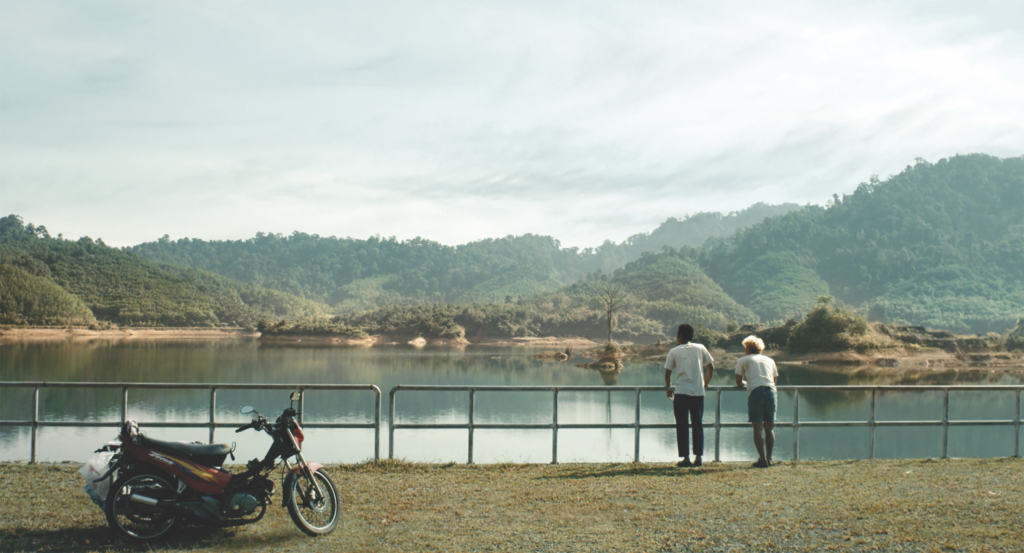
Myanmar’s Rohingya crisis has become a pressing social and political concern for neighbouring Thailand. The Rohingya people are a majority-Muslim ethnic minority in western Myanmar, who ‘differ from Myanmar’s dominant Buddhist groups ethnically, linguistically, and religiously’.[4]Eleanor Albert & Andrew Chatzky, ‘The Rohingya Crisis’, Council on Foreign Relations, 5 December 2018, <https://www.cfr.org/backgrounder/rohingya-crisis>, accessed 22 July 2019. The origins of the oppression of the Rohingya people remain contested, but certainly escalated during the British’s colonial rule of what was then Burma in the nineteenth century. As scholar Engy Abdelkader has suggested, ‘Colonial policies encouraged migrant labor in order to increase rice cultivation and profits,’ which led to an influx of Muslim migration from nearby regions.[5]Engy Abdelkader, ‘The History of the Persecution of Myanmar’s Rohingya’, The Conversation, 21 September 2017, <https://theconversation.com/the-history-of-the-persecution-of-myanmars-rohingya-84040>, accessed 22 July 2019. When the Rohingya sided with their British colonisers in the conflict with the Japanese during World War II in exchange for a promised ‘Muslim National Area’, they were ‘rewarded […] with prestigious government posts’, fomenting further resentment from other local ethnic groups.[6]ibid. After Burma became independent in 1948, the Rohingya were subject to a series of crackdowns and escalating conflicts amid rising Buddhist nationalistic fervour, and, in the 1980s, were rendered stateless by a series of citizenship reforms imposed by Myanmar’s ruling military junta.[7]Albert & Chatzky, op. cit. As the Council on Foreign Relations’ Eleanor Albert and Andrew Chatzky point out: ‘The Myanmar government has effectively institutionalized discrimination against the ethnic group through restrictions on marriage, family planning, employment, education, religious choice, and freedom of movement.’[8]ibid.
The Rohingya crisis is emblematic of many of the dilemmas afflicting the postcolonial world, with arbitrary colonial divisions having been redrawn as new national boundaries, and the grievances of distinct ethnic and religious groups left to fester and escalate into conflict.
The Rohingya crisis is emblematic of many of the dilemmas afflicting the postcolonial world, with arbitrary colonial divisions having been redrawn as new national boundaries, and the grievances of distinct ethnic and religious groups left to fester and escalate into conflict across Africa, Asia and the Middle East. Aroonpheng is not the first to give cinematic representation to refugee issues and the simultaneous invisibility and inflexibility of borders. In Poor Folk (2012), Ice Poison (2014) and The Road to Mandalay (2016), Burmese director Midi Z has chronicled characters of limited means and mobility fleeing desperate circumstances, while Chinese filmmaker Wang Bing’s Ta’ang (2016) documents the gruelling march of the titular minority group as they flee political turmoil in the region marking the border between Myanmar and China.
Aroonpheng approaches these crises indirectly, by way of metaphor and motif, however. Although his film carries a strong suggestion of militias patrolling the forest as an informal anti-refugee death squad, for the most part, Manta Ray’s central drama deals with gentler notions of fluidity, transformation, mirroring and doubling, and aquatic life. Early in the film, the fisherman explains the significance of the manta ray to Thongchai: ‘During the rainy season, they’ll hide around the cape. And when the storm is over, they’ll go home.’ In Werner Herzog’s Little Dieter Needs to Fly (1997), the titular protagonist – himself the survivor of a torturous South-East Asian ordeal – makes a visit to an aquarium, and tells his director that a passing jellyfish reminds him of death. In Manta Ray, the titular creature represents the possibility of transformation, as the film highlights the mutability of individual characteristics. The ray drifts through the narrative as its two characters are drawn into proximity, slowly become like each other, part company, and then are drawn together again in new and strange ways – hiding in plain sight, and fleeing the omnipresent but invisible danger.
Endnotes
| 1 | See Wendy Ide, ‘10 Years Thailand: Cannes Review’, Screen Daily, 11 May 2018, <https://www.screendaily.com/reviews/10-years-thailand-cannes-review/5129197.article>, accessed 1 August 2019. |
|---|---|
| 2 | Phuttiphong Aroonpheng, ‘Director’s Note’, in Jour2Fête, Manta Ray press kit, 2018, p. 4. |
| 3 | ibid., p. 4. |
| 4 | Eleanor Albert & Andrew Chatzky, ‘The Rohingya Crisis’, Council on Foreign Relations, 5 December 2018, <https://www.cfr.org/backgrounder/rohingya-crisis>, accessed 22 July 2019. |
| 5 | Engy Abdelkader, ‘The History of the Persecution of Myanmar’s Rohingya’, The Conversation, 21 September 2017, <https://theconversation.com/the-history-of-the-persecution-of-myanmars-rohingya-84040>, accessed 22 July 2019. |
| 6 | ibid. |
| 7 | Albert & Chatzky, op. cit. |
| 8 | ibid. |
